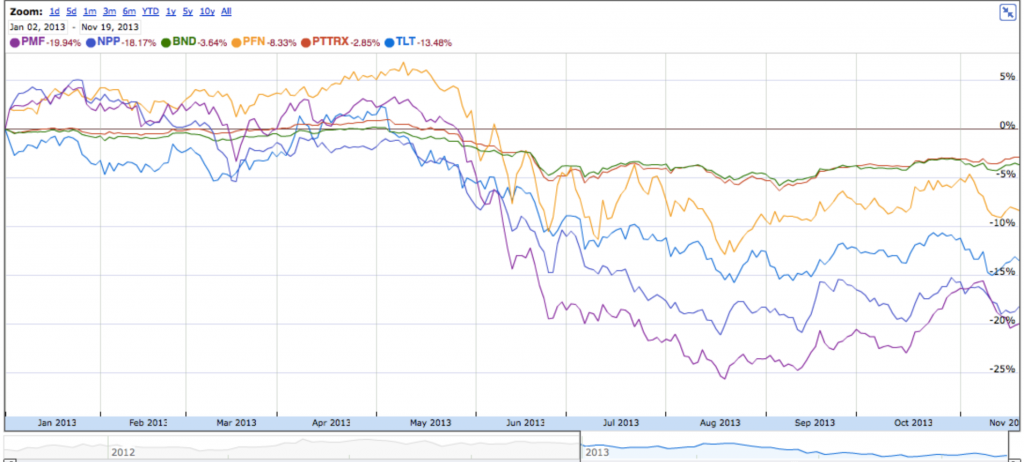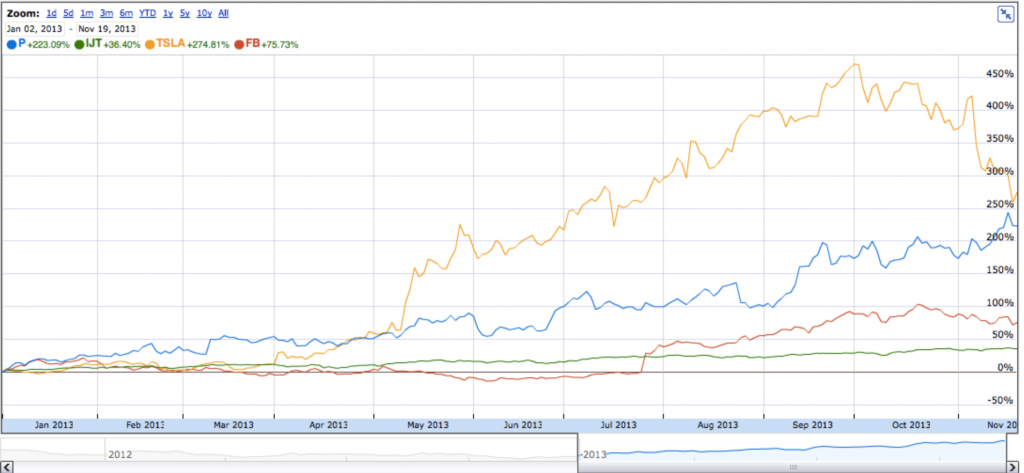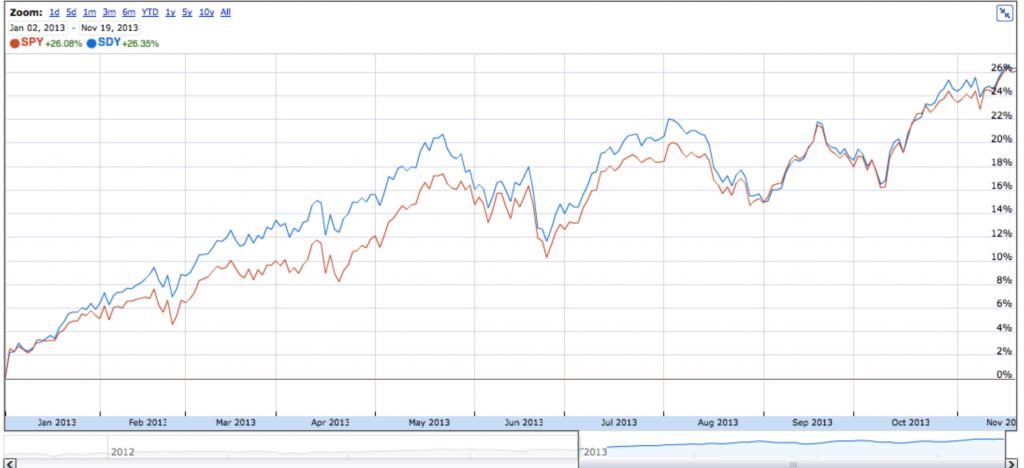Quantitative Easing is a politically controversial topic, even if macroeconomic theories point to its validity as a policy decision to use monetary policy to help the larger economy avoid a liquidity trap. One of the political arguments against monetary expansion is that it harms savers because it artificially depresses yields on things like U.S. Treasuries, which is why the 10 year bond has offered less than a 3% return for quite some time, and inflation-adjusted returns for shorter Treasuries is negative.
This isn’t the only way that QE has punished savers. In the quest for yield, many investors have looked to riskier high yield options, such as leveraged bond funds, mREITs, high yield funds, and so on. None of these have done well this year. Here’s a quick snapshot of how some of these funds have performed in 2013.
That’s a lot of red. At the same time, speculative stocks like Facebook (FB), Tesla (TSLA), Pandora (P), and others have seen huge appreciations in 2013, even if the long-term profitability of these companies is questionable:
The conclusion from these two charts is a very uncomfortable one: while 2013 has proven to be a year for stock pickers, it has also proven to be a year where the odds are stacked against retirees, people living on a fixed income, and pension funds with strict mandates about how and when they can allocate capital. The latter is particularly troubling as pension fund outlays rise on America’s changing demographics, since the Baby Boomers are beginning to retire en masse, and pension annual return targets hit 8% and above. This is another form of good news for the stock pickers, and pension funds have renewed interest in alternative investments, including hedge funds. The retail investor looking for returns is out in the cold; things like municipal bond funds, which once offered mid-single-digit returns and very stable pricing, have become suddenly volatile and ever declining. If interest rates rise in 2014, their prices will likely fall even further.
Interest rates will only rise if the Federal Reserve scales back its bond buying project known as QE3, which is seen by the market as an inevitability.There has been one asset class to benefit from this Fed-influenced market: dividend-yielding stocks. The S&P Dividend SPDR (SDY) is up 26.38% YTD excluding dividends, which should help it approach an annualized 30% for the full year. That’s a hair higher than the S&P 500.
But rising prices on dividend-yielding stocks isn’t necessarily a good thing. If you hold a stock for dividends, its price is irrelevant—as Warren Buffett famously said, the best time to sell stocks is never. Likewise, rising prices for dividend-yielding stocks makes it harder for new retirees who need to allocate capital to income-yielding investments. Plus, rising prices for dividend stocks, if based on the sole need for income and not on company fundamentals, can easily create a bubble that pops when investors leave dividend payers for other options.
The Lesson: Stock Picking is Likely to Get Harder
What does this tell us? For one, it suggests that the quest for income is creating a difficult stock market, and this will need to be remedied. Considering America’s demographics and voter base, it’s inevitable that the Federal Reserve tackle this issue with different intervention strategies.
This could directly hurt stock pickers, who lose cheap leverage opportunities that give the opportunity to seek gains in growth stories like TSLA and FB. Stock pickers will need to be more prudent and invest more in value than in perceptions of future value, which will diminish returns for stock picking because megagrowth stocks fueled by speculation will be less prominent. Returns will become lower, but more sustainable.
This is great news for value-based investors who want a saner market, and it will be good news for people seeking yield. But hedge funds, momentum traders, HFT shops, and scalpers may find life more difficult if they don’t lower their expectations and re-adjust to the implications of new monetary policies.



